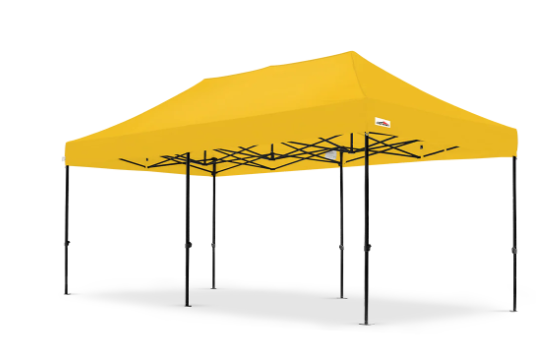
Tying down cargo with truck straps is crucial for safe transportation. If done right, it prevents damage and ensures your load stays put, even on bumpy roads. Whether you’re hauling furniture, equipment, or materials, proper securing methods make a huge difference.
By learning how to properly tie down cargo, you’ll avoid accidents and costly mistakes. Let’s break it down so you can secure your load quickly and safely, keeping everything in place during the ride!
Introduction to Cargo Tie-Downs and Their Importance
Cargo tie-downs are essential tools that keep your load safe and secure while you drive. Whether you’re hauling furniture, tools, or heavy equipment, properly tying down cargo is crucial to prevent accidents, damage, or even fines. Without the right tie-downs, items can shift or fall off, causing dangers on the road.
What Are Cargo Tie-Downs?
Cargo tie-downs are straps or ropes that hold items in place on a truck or trailer. They are designed to secure your load tightly, preventing it from moving during transport. These tie-downs come in different types, such as ratchet straps and cam buckle straps, to fit various loads and situations.
Why Are Cargo Tie-Downs Important?
Proper tie-downs prevent your cargo from sliding around, falling off, or causing damage. This not only ensures your items arrive safely but also keeps other drivers safe on the road. Improperly secured loads can lead to accidents, fines, or damage to your cargo, all of which can be costly and dangerous.
Types of Truck Straps and How to Choose the Right One
When it comes to securing cargo, the right truck straps can make all the difference. There are various types of straps available, each designed for specific needs and loads. Let’s explore the different kinds and how to choose the best one for your job.
1. Ratchet Straps
Ratchet straps are the most commonly used type of truck strap. They are perfect for securing heavy loads because they allow you to adjust the tension easily. The ratchet mechanism tightens the strap to a high level of security, ensuring your load stays in place even on rough roads.
Best for: Heavy and large loads like furniture, machinery, or construction equipment.
2. Cam Buckle Straps
Cam buckle straps are simpler than ratchet straps and are great for lighter loads. They use a cam buckle to adjust the strap’s tightness, making them easier to use if you need to secure cargo quickly. Though not as strong as ratchet straps, they’re still a good option for lighter or delicate items.
Best for: Light to medium loads, like smaller furniture or fragile items.
3. E-Track Straps
E-track straps are versatile and designed to work with E-track systems, often found in trailers. These straps slide into the track and can be adjusted for various cargo sizes. They provide a secure, flexible way to fasten down your cargo in trailers and trucks.
Best for: Loads in trailers or trucks with E-track systems.
4. Bungee Cords
While not technically a “strap,” bungee cords are often used for quick, temporary tie-downs. They’re stretchy and flexible but don’t offer the same level of security as other types of straps. They work for light items that don’t need to be perfectly secure.
Best for: Quick fixes or lightweight, non-critical cargo.
How to Choose the Right Strap
When selecting the right strap, consider the weight and size of the load you’re securing. For heavy loads, ratchet straps are the safest bet, while cam buckle straps work well for lighter items.
Always check the weight capacity of the strap to ensure it’s up to the task. Additionally, choose straps that are made from durable materials like nylon or polyester for long-lasting strength and resistance to weather conditions.
Step-by-Step Guide to Properly Tie Down Cargo
Properly tying down cargo is essential for safe and secure transport. Whether you’re moving goods across town or long distances, the right technique ensures your load stays in place and prevents accidents. Here’s a simple, step-by-step guide to help you secure your cargo the right way.
Step 1: Organize Your Load
Before you start securing your cargo, take a moment to organize it. Make sure the items are evenly distributed and placed in a way that they won’t shift during transport. Heavier items should be placed at the bottom and toward the center, while lighter items should go on top. This balance will prevent your load from becoming unstable.
Step 2: Choose the Right Straps
Select the appropriate truck straps for your load. Ratchet straps are ideal for heavy items, while cam buckle straps work best for lighter loads. Make sure the straps are long enough to reach around your cargo and have the proper weight rating to handle the load.
Step 3: Position the Straps Correctly
Place the straps over or around your cargo, making sure they are positioned securely. If you’re using a ratchet strap, thread the strap through the ratchet mechanism and place it across your load. If you’re using cam buckle straps, loop them around your load and adjust the length.
Step 4: Tighten the Straps
Using the ratchet mechanism or cam buckle, tighten the straps until they are snug but not overly tight. Over-tightening can cause damage to your cargo, while loose straps won’t secure the load properly. Ensure the straps are tight enough to hold the cargo in place but still allow for a bit of give to avoid strain.
Step 5: Double-Check Your Work
Once the straps are tightened, give them a quick tug to make sure they are securely fastened. Check the straps for any signs of wear or damage. Also, ensure that the cargo is stable and not shifting. If anything seems loose or unstable, adjust the straps until the load is secure.
Step 6: Check During Transport
It’s always a good idea to check your cargo a few miles into your journey to make sure the straps haven’t loosened. If needed, stop and tighten them again. Periodic checks during long trips ensure everything stays in place and safe.
Conclusion
Properly tying down cargo with truck straps ensures both safety and peace of mind. It’s simple to master once you know the steps. With the right technique, you’ll be ready for any load, keeping your cargo secure and your journey smooth.
Write and Win: Participate in Creative writing Contest & International Essay Contest and win fabulous prizes.


